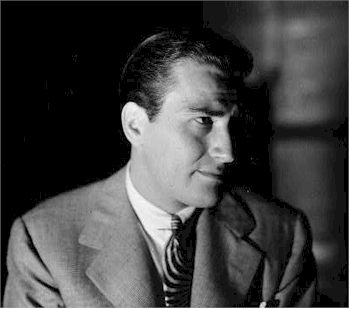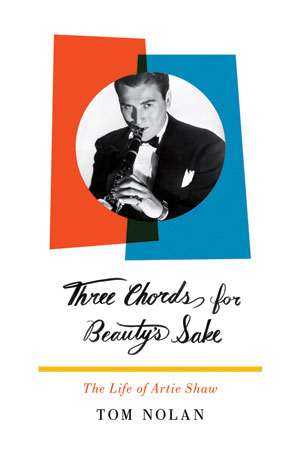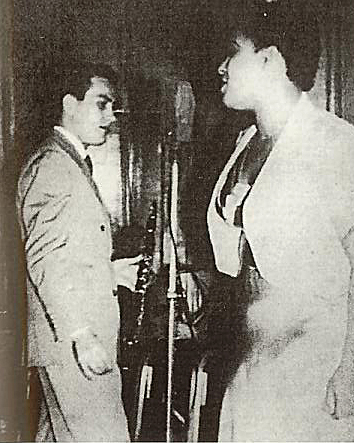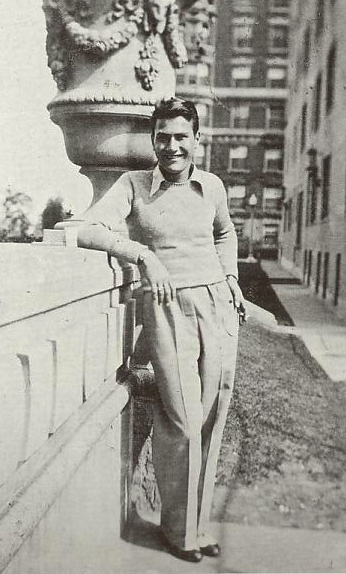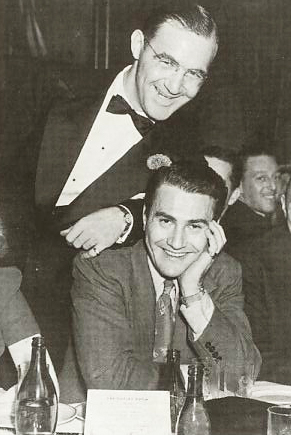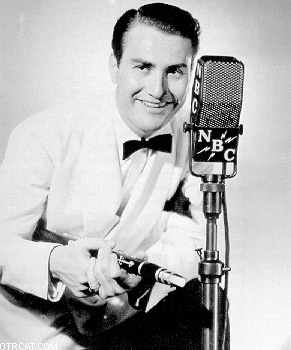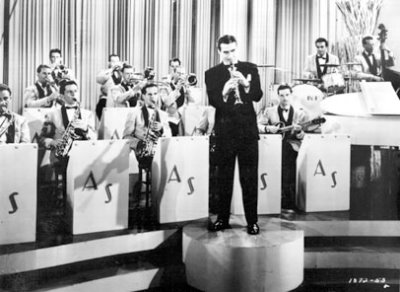Artie Shaw was one of the top-grossing stars of the 1930s and the only serious rival Benny Goodman had to his title as “The King of Swing." To celebrate the Shaw legacy, Riverwalk's David Holt talks with Tom Nolan, the author of a new biography, Three Chords for Beauty's Sake: The Life of Artie Shaw. Nolan drew on extended interviews he conducted with Shaw in his home between 1990 and 2004.
Also on our broadcast salute to Artie Shaw, clips from Terry Gross' 1985 interview. Shaw talks about being a white man trying to play jazz in New York in the 1920s, his passion for music and his lifelong competition with Benny Goodman.
The title of Tom Nolan's new biography refers to a poem that Shaw quoted throughout his life: "I played three chords for beauty's sake and one to pay the rent." Nolan explains that Shaw saw this proportion as a fair bargain to make with the competing demands of art and commerce in his life, "but when it began to tip out of balance he’d take a break for a while, he’d go away for a few weeks, months or even years."
As a teen-aged freelance musician in New York in the 1920s Artie Shaw had a front-row seat for the unfolding of jazz history. He personally knew and admired Bix Beiderbecke and even roomed with him briefly. He was among an elite group of young, white "session men" in New York who found employment (even during the Depression years) in hotel ballroom dance bands, on popular radio shows and in recording studios. Among his colleagues were Jimmy and Tommy Dorsey, Benny Goodman and Glen Miller—all of whom went on to lead major swing bands.
In the early 1930s Shaw came under the mentorship of Harlem Stride pianist Willie 'The Lion' Smith. Early in both their careers Shaw developed a friendship with Billie Holiday. Later he hired her to sing with the Artie Shaw Orchestra, and she became the first black vocalist to work full-time in an all-white band. Racial pressures proved to be too much to bear however, and Billie left the band shortly thereafter.
Following the example of Paul Whiteman before him, Artie Shaw's first band featured a mixture of strings and winds, creating an innovative blend of jazz and classical elements. But Shaw's first hit record, "Begin the Beguine," was recorded with more conventional swing-band instrumentation with "killer-diller," 'hot' arrangements that became a hallmark of his work.
As young musicians in New York,
Artie Shaw and Benny Goodman
found themselves working side by
side in the same orchestras,
often competing for the same
jobs. This competition only
increased as the two
clarinetists evolved into Swing
Era stars.
Nolan says,
"Right from the start the agents and promoters had the notion that Artie was a great rival and competition for Benny Goodman. It wasn’t completely Artie’s idea to start this competition but it was real and it was in earnest and certainly Artie wanted to be number one and he did become number one, was voted the number one swing orchestra in the Down Beat poll in late 1938."
Among Shaw's other 'monster' hit records of the 1930s were "Frenesi" and an arrangement of Hoagy Carmichael's "Star Dust" that featured Artie's clarinet, Billy Butterfield on trumpet and Jack Jenny on trombone. It was the most popular version of the already famous song, and according to Nolan, "After Shaw it was a standard, a classic, an American evergreen." Jim Cullum on cornet and Ron Hockett on C-Melody Sax offer their very personal interpretation of "Star Dust" on this week's radio show.
Artie Shaw's hits sold over 100 million records. Among the most popular was a bouncing blues, "Summit Ridge Drive" recorded in 1940 with a smaller band-within-a-band called the Gramercy Five. The record featured trumpeter Billy Butterfield and Johnny Guarneri on harpsichord, an instrument never before used in jazz.
Artie Shaw quit playing in public after a spectacular and, as it turned out, final recording session with the Gramercy Five in 1954. After living in Europe for 6 years he returned to a very different jazz scene in the US, with the advent of Miles Davis, John Coltrane and Ornette Coleman. Shaw felt out of place in this new world and was very much against repeating the music he had created earlier.
For much of his career, Artie Shaw was torn between a need for financial success and a deep desire to create lasting "art-music" for its own sake. Another early and continuing interest was literature and writing. He went on to write an autobiography, three short novels and a collection of short stories. His 1952 autobiography, The Trouble With Cinderella: An Outline of Identity was in part inspired by his own psychoanalysis. He wrote, "The trouble with Cinderella is that nobody lives happily ever after."
In our Riverwalk Jazz salute to Artie Shaw, The Jim Cullum Jazz Band with guest clarinetists Bobby Gordon and Allan Vaché present Shaw's Gramercy Five hits, "Summit Ridge Drive," "Cross Your Heart" and "Scuttlebutt" in new arrangements by Ron Hockett. And Becky Kilgore joins the Band to sing Shaw's compositions, "Moon Ray" and "Any Old Time."
Photo credit for Home Page: Cover of Three Chords for Beauty’s Sake: The Life of Artie Shaw by Tom Nolan.
Text based on Riverwalk Jazz script by Margaret Moos Pick ©2012


